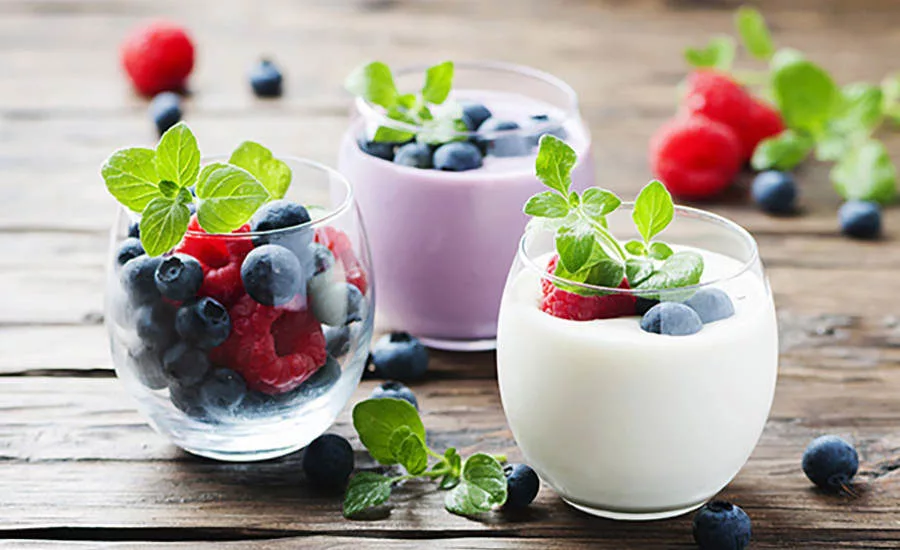Studying the Art and Science of Sugar Reduction Ingredients
Hitting the Sweet Spot: The perception of sweetness for a sweetener relies on how it works in formulation, how it is metabolized in the mouth, and how it binds with receptors on the tongue

Newer forms of stevia and stevia blends continue to approach the flavor and function of sucrose for many formulations.
PHOTO COURTESY OF: SweeGen, Inc.
In 2015, the World Health Organization (WHO) predicted a shift in consumer interest away from artificial high-intensity sweeteners and toward more natural alternatives. The organization cited safety concerns as well as potential toxicity concerns because of the negative impact some artificial sweeteners could have under environmental degradation. More than that, however, consumer demand was only continuing to rise not only for “better for you” but for better tasting, cleaner label foods and beverages.
The perception of sweetness for a sweetener relies on how it works in formulation, how it is metabolized in the mouth, and how it binds with receptors on the tongue. Different sweeteners bind with different binding sites and the challenge of making a food or beverage “perfectly sweet” can be as much of a moving target as is the definition of “clean label.” Here are some tips and insights into using the currently popular sugar-reduction ingredients that can help processors hit the sweet spot bullseye.
New Sweet Kids
Allulose (sometimes referred to as psicose, d-psicose, or d-allulose) continues to be in the spotlight for its surprising clean flavor and versatility, as well as its nonglycemic qualities and ease of application. It also is favored for its action as a reducing sugar, contributing to Maillard browning and caramelization in bakery applications. The naturally occurring “rare” sugar has seen prices drop as technology for extracting it from corn, beets, and other plants.
Allulose has an upfront sweetness onset like sucrose, and while it can stand alone as a one-to-one substitute for sucrose, fructose, or glucose, it is still limited by its original GRAS limit of 30g per day. It provides excellent synergies when combined with high intensity sweeteners and is suitable for a variety of beverage categories, including juices and soft drinks, even under high-heat processing conditions.
With greater hygroscopicity than sucrose, allulose can be used in base mixes for frozen dairy and non-dairy frozen desserts, such as scoopable ice-creams, gelato, and coated frozen confections and bars at a maximum of 5% by weight. This limit currently exists for guidance based on a presumed ingestion rate of allulose from all frozen desserts.
Sugars are hygroscopic, meaning they are attracted to and bind well with water, and, as such, contribute desired attributes such as maintaining softness in cookies and other baked goods. For foods and beverages optimized with brown sugars of any type, the caramel notes and moisture from molasses are impossible to replace with any low or non-nutritive, high intensity option. Light and dark brown sugars, with molasses ranging from about 3-6%, contribute distinctive caramel notes and color, as well as moisture.
Some low-viscosity glucose syrups, with 25% less sugar than a reference 42 or 63 dextrose equivalents (DE) corn syrup, can reduce total sugars while retaining existing standardized formulations. Viscosity is a consideration where more viscous options can cause production issues. Low sweetness corn syrup products can be labeled “corn syrup” and are manufactured using only partial hydrolysis of corn starch to dextrose, and no conversion of dextrose to fructose. Often, these ingredients are used more for their water-binding capacity than for sweetness.
Protein-based thaumatin, considered 100,000 times sweeter than sucrose, is caloric but contributes negligible calories due to its intense sweetness. It is stable at boiling temperature at a pH below 5.5 for up to an hour and is stable during thermal processing such as pasteurization and canning in pH environments below 7.0. Thaumatin is hailed as both a low-calorie sweetener and a flavor modifier for many product categories, including chewing gum, dairy, pet foods, and animal feed. It masks bitterness and other objectionable notes when blended with high-intensity sweeteners, despite its own licorice-like linger.
The recent trend in biomanufacturing of ingredients, receiving a lot of attention lately for the production of meat, seafood, and dairy proteins recently added sweeteners into the mix. A Swedish technology company has successfully used non-cell-based enzyme technology to produce the rare sugar kojibiose, occurring in trace amounts in the caramelization of sugar and found naturally in honey. It is a mildly sweet sugar with the unusual characteristic of being a prebiotic disaccharide, and thus helping to support digestive health.
Kojibiose was previously hard to synthesize, not to mention expensive. But the new enzyme technology makes possible high-volume, comparatively low-cost production of the novel ingredient possible. As such technologies are expanded and applied to other sweetener sources, more clean-label sugar-reduction options should continue to become available.